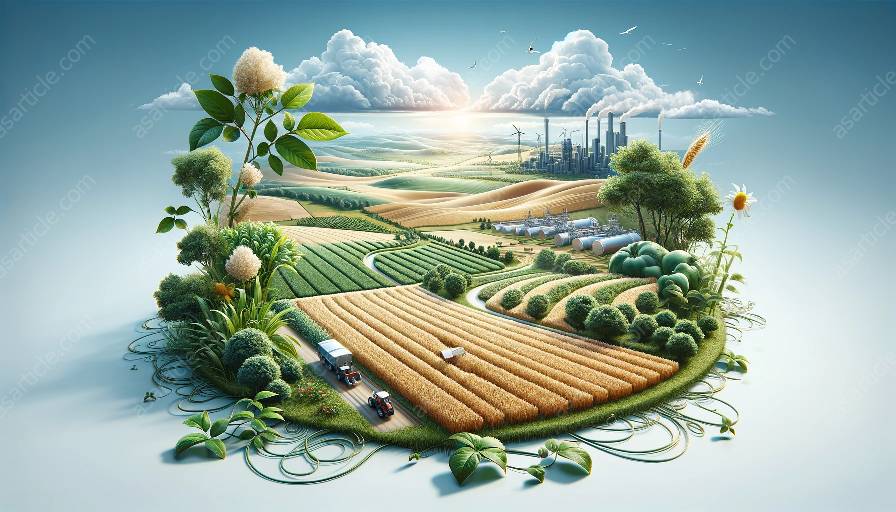Embark on a journey into the captivating realm of fruit and vegetable physiology, where we delve into the inner workings of plant growth, development, and the myriad factors that influence the physiology of these bountiful crops.
The Basics of Fruit and Vegetable Physiology
At the core of fruit and vegetable physiology lies the fundamental processes that govern plant growth and development. From seed germination to maturation, plants undergo a series of intricate physiological changes that result in the production of nutrient-rich fruits and vegetables.
Seed Germination and Early Growth
The journey of a fruit or vegetable begins with the process of seed germination. Under optimal conditions of moisture, temperature, and oxygen availability, the seed awakens from dormancy and initiates the process of germination. As the embryonic plant emerges from the seed, it relies on stored energy and nutrients to fuel its early growth.
Photosynthesis and Energy Production
Central to the physiology of fruit and vegetable plants is the process of photosynthesis, where chlorophyll-containing cells in the leaves harness sunlight to convert carbon dioxide and water into glucose and oxygen. This energy-rich glucose serves as the primary fuel for the plant's growth and development, while the oxygen is released into the air as a byproduct.
Transpiration and Water Movement
Another critical aspect of plant physiology is transpiration, the process by which water is absorbed by plant roots and then moves through the plant, eventually evaporating from the leaves. This continual water movement helps regulate the plant's temperature, supplies essential nutrients, and maintains turgor pressure to support the plant's structure.
Factors Affecting Fruit and Vegetable Physiology
Several factors influence the physiology of fruit and vegetable plants, ultimately impacting their growth, quality, and yield. Understanding these factors is crucial for optimizing production and ensuring the nutritional value of the harvest.
Environmental Conditions
Temperature, humidity, light, and soil composition are among the key environmental factors that profoundly impact fruit and vegetable physiology. Variations in these conditions can influence plant growth, flowering, fruit set, and overall productivity.
Nutrient Availability
Essential nutrients such as nitrogen, phosphorus, potassium, and a range of micronutrients play vital roles in the physiological processes of fruit and vegetable plants. Adequate nutrient availability supports healthy growth, flowering, and the development of high-quality fruits and vegetables.
Water Management
Proper water management is critical for fruit and vegetable physiology. Both excess and deficient water supply can detrimentally affect plant physiology, leading to issues such as wilting, poor fruit quality, and susceptibility to diseases.
Advancements in Fruit and Vegetable Science
As our understanding of fruit and vegetable physiology deepens, scientists and researchers continue to make groundbreaking discoveries that contribute to the advancement of fruit and vegetable science. These developments have far-reaching implications for agricultural practices and crop productivity.
Genetic Modification and Breeding
Modern fruit and vegetable science integrates cutting-edge genetic modification techniques and traditional breeding methods to develop plant varieties with enhanced physiological traits, such as disease resistance, improved shelf life, and enhanced nutritional content.
Biotechnological Innovations
Biotechnological advancements have revolutionized fruit and vegetable science, allowing for the manipulation of specific physiological pathways within plants to optimize traits such as fruit size, flavor, and post-harvest attributes, thereby contributing to sustainable agricultural practices.
Optimizing Growing Conditions
Utilizing the knowledge gained from fruit and vegetable physiology, agricultural scientists are continually refining growing conditions to maximize plant physiological processes, ultimately enhancing crop yields, quality, and nutritional value.
The Intersection of Fruit and Vegetable Physiology with Agricultural Sciences
The interdisciplinary nature of fruit and vegetable physiology is underscored by its intersection with agricultural sciences, where the collective knowledge of plant physiology, agronomy, and horticulture converges to advance sustainable and innovative agricultural practices.
Sustainable Crop Management
Agricultural sciences draw upon the principles of fruit and vegetable physiology to develop sustainable crop management strategies that optimize resource utilization, minimize environmental impact, and improve the resilience of crops in the face of changing environmental conditions.
Integrating High-Tech Solutions
The amalgamation of fruit and vegetable physiology with agricultural sciences has paved the way for the integration of high-tech solutions, such as precision agriculture and remote sensing, to monitor and manage the physiological status of crops, leading to more efficient resource allocation and improved yields.
Nutritional and Health Implications
The collaboration between fruit and vegetable physiology and agricultural sciences has profound ramifications for human health and nutrition. By understanding the physiological factors that influence fruit and vegetable quality, scientists can optimize cultivation practices to enhance the nutritional value and health-promoting properties of these crops.

